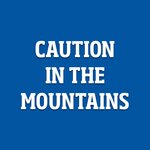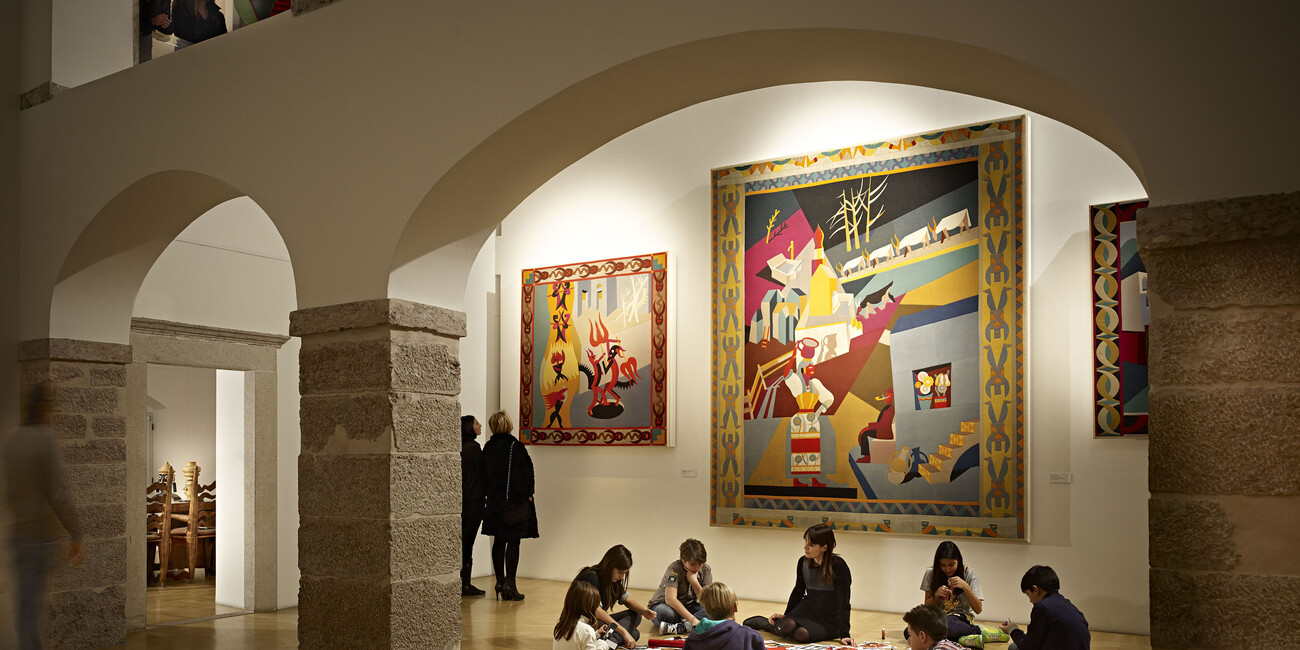A RARE MIX OF MOUNTAINS, SNOW AND CULTURE
From Contemporary Art to the Ladin Carnival. Trentino’s cutting-edge museums and sculpture parks are testament to its vigorous cultural life. We celebrate our folk traditions with vigour, too – especially at Christmas and during Carnival.
Trentino sits on one of the principal trade routes between Italy and northern Europe – along the Adige valley, and over the Brenner pass. For centuries, it’s been a highway for ideas as well as goods, and it’s nourished our long traditions of artistic and intellectual endeavour. You’ll see them in our state-of-the art museums and galleries, and in our university, which is one of the most highly-rated in Italy. Add in energetic folk traditions, such as the Ladin Carnival in the Val di Fassa, and you’ve got a mountain region of extraordinary cultural depth and diversity.
Where art and landscape combine: Trentino’s sculpture parks
One of the most striking aspects of Trentino’s cultural scene is the way some of our most cutting-edge institutions have moved out of our towns and cities, and into the mountains. Our outdoor sculpture parks are one of the most exciting examples of this trend: and they’re never more striking than when there’s snow on the ground.
The finest work can be found at Arte Sella in the Val di Sella. Here, the sculptures and installations are all site-specific, and are as rooted in the landscape as the forests around them. Lee Jae Hyong’s magnificent circuit of sliced camellia trunks looks particularly stark and beautiful against its backdrop of snow-dusted trees. So too Giuliano Mauri’s soaring Cattedrale Vegetale.
There are exciting developments afoot in the Val di Fiemme’s RespirArt project as well. Here, the theme is the relationship not just between art and nature, but art and time. The guiding principle is one of “letting masterpieces go”, and each work has been made with its own slow disintegration in mind. 13 of the artworks can be enjoyed in winter, alongside the Agnello piste in the Ski Center Latemar, either with snowshoes or on skis.
MUSE: a science museum designed by Renzo Piano
Set on the outskirts of Trento, and designed by Renzo Piano (architect of London’s Shard), MUSE is as much a piece of contemporary sculpture as a state-of-the-art science museum. Outside, slanting walls of glass echo the natural architecture of the Alps, and seem to float on pools of water. Inside, the spacious high-tech galleries are flooded with natural light.
The exhibits are no less impressive. MUSE’s principal theme is the impact of altitude on ecology, from snow-frosted mountain peaks all the way down to the sea. Highlights include the greenhouse, where waterfalls run through a living recreation of a Ugandan rainforest. The steamy microclimate is particularly welcome on a chilly winter’s day.
MART: one of Italy’s most important collections of modern art
MART is our must-see indoor art gallery – an important collection of modern and contemporary art, which is particularly strong on the Futurists, but also includes masterpieces by de Chirico and Morandi. The emphasis is overwhelmingly on Italian painters and sculptors, and offers the visitor a breathtaking introduction to the country’s artistic output over the last 120 years. But there are works by the international A-list too – including Picasso, Klee, Kandinsky and Joseph Beuys.
The building itself is a treat. Crouched behind two 18th century palazzi in the middle of Rovereto, it gives little of its grandeur away at first sight: but then opens out under a vast, steel and plexiglass dome, around which its galleries are arranged.
Keep an eye out for special exhibitions while you’re there. MART runs a vibrant programme of temporary shows, and this winter’s highlight is “Magic Realism” - focusing on the Italian artists of the 1920s and 30s who used realism to hint at a richer and more wonderful world. It runs from December 3 to April 2, before transferring to museums in Finland and Germany.
Powerhouse of the Prince Bishops: the Castello del Buonconsiglio
Its single most celebrated artwork is the Cycle of the Months - a vivid depiction of life in 15th century Trentino, painted by an unknown Gothic master from Bohemia. But really, it’s the overall impression created by the Castello del Buonconsiglio that will stay with you. The seat of the Prince-Bishops of Trento, it dominates the city’s historic core, and is a striking testament to their self-confidence and power – especially during their 16th century heyday.
There are four distinct areas of development – the original 13th century Castelvecchio, a 14th century Venetian-Gothic loggia, the Renaissance Magno Palazzo, and the Baroque Giunta Albertiana. Together they offer a fascinating potted history of Italian architecture, and house an extraordinary collection of art and archaeology, stretching from prehistory all the way to the late 19th century.
Italy’s best ethnographic museum
Of course, there’s a lot more to culture than paintings and sculpture, as you’ll see at the Museum of the Customs and Traditions of the People of Trentino. Set inside a 13th century monastery at San Michele all’Adige, it offers a beautifully-curated collection of tools, toys, furniture and musical instruments, displayed in 43 rooms. There are over 12,000 exhibits in all – evoking sights, smells and practices which were utterly familiar to our forbears, but which have disappeared completely in the 21st century. No wonder it’s regarded as the best collection of its kind in Italy.
Christmas markets: an essential part of our festive season
They may have originated in Austria and Germany, but Christmas markets are now an essential part of our festive scene. It’s further evidence - if any were needed - of the rich mix of cultures in this part of the Alps.
Most of the markets run from late November until early January, and are a charming way to share the Christmas spirit with us. It’s not just the flickering candles and strings of fairy lights that make them special. Nor the smell of cinnamon and cloves, and the taste of our traditional Christmas cake, called Zelten. These markets are also the setting for carol singing, live music, and dancing.
The city of Trento holds our biggest market, with more than 90 wooden huts spreading through three of the city’s historic squares, Piazza Fiera, Piazza Cesare Battisti and Piazza Santa Maria. Meanwhile, Rovereto’s Christmas market is a celebration of cultures and traditions from around the world. Often, it’s the setting as well as the market itself that provides the magic, as in the ancient village of Canale di Tenno – an enchanting medieval village overlooking Lake Garda.
Carnival in the Val di Fassa: mayhem with a Ladin accent
In Trentino there is no tradition more distinctive than the Ladin Carnival in the Val di Fassa. The festival runs from January 17th (feast day of Sant’Antonio Abate) all the way to Shrove Tuesday, and has been made famous by its outlandish wooden masks, processions and mascherèdes – short satirical burlesques, acted out in Ladin (the ancient language of the Dolomites).
Bufon is the festival’s star. A master of mayhem with an enormous pointed nose, he dances through the towns and villages armed with a telescope, seeking out vice and virtue – and he always seems to find vice more interesting. His arrival is guaranteed to create a frisson of expectation, as the onlookers wait to see who he’ll choose to humiliate.
Meanwhile, in Madonna di Campiglio, Carnival has a very different flavour – and celebrates the resort’s 19th-century links with the Hapsburg monarchy, with a costumed ball, fireworks, and processions. Other notable Carnival destinations include Grauno, in the Val di Cembra, where the locals evoke pre-Christian rituals with a huge bonfire overlooking the town, and Storo, which brings together masked dance groups and floats in one of Trentino’s biggest parades.
Your key to our culture: the Trentino Guest Card
All of the museums featured above are free if you have a Trentino Guest Card. It’s available to guests staying in any of the 1,600 hotels and B&Bs participating in the scheme, and grants the holder free entry to more than 100 museums, castles, and attractions, as well as free public transport in Trentino and a range of discounts in our most interesting shops.
Info: visittrentino.info//not-only-snow


